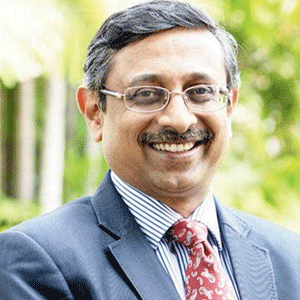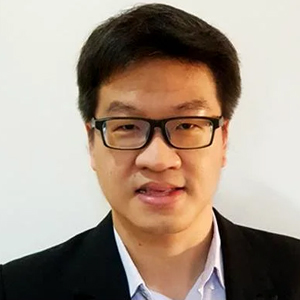THANK YOU FOR SUBSCRIBING

Terry Lenhardt, VP & CIO, Steelcase
I frequently meet with customers at our Grand Rapids location. For over 100 years, our company has created workplaces, so the visiting customer groups typically include an architect, an interior designer and a representative from facilities. They come to our offices to see our latest products and hear about our research on work, workers and the workplace. I always encourage these groups to invite an IT professional to accompany the group. At the start of the day, the IT representative often seems a bit confused as to why they are visiting a furniture company. By the end of the day, the IT team member is often the most enthusiastic about the possibilities of their new space.
What causes this attitude shift? As individuals and organizations become more connected and rely on technology for their work, the role of IT continues to grow. While the importance of wireless networks and technology in spaces was overlooked in the past, thoughtful organizations now see the value of bringing design, facilities and IT teams together at the start of projects. The change in mindset is invigorating. Leaders see it’s not about who owns what; it’s about agile, cross-functional teams working as an interconnected ecosystem.
We should take our place at the table and guide our organizations to leverage technology to better use space, creating holistic workplaces that include people, place, products, and technology. The change lets IT take the next step, moving past the organization's focus on it's operations and functions, and look to improve its wellbeing.
IT and Technology in Space Planning
When IT is involved in the earliest stages of a workplace strategy, critical needs like WLAN can be proactively planned. IT professionals can take into account the rapidly increasing demand on networks as the number of personal, employer-provided, and smart objects in offices grows and as technologies like high definition video to connect distributed teams, become more common. Early involvement can build a smarter wireless strategy, ensure that adequate coverage and eliminate day to day roadblocks employees face, like long waits to get connected to the network, screens too small for the meeting room or audio seeping into an adjacent space.
When It Is Involved In The Earliest Stages Of A Workplace Strategy, Critical Needs Like WLAN Can Be Proactively Planned
IT has a unique role in recognizing these pain points and offering solutions to re-humanize work. When we have a seat at the table, we can address the requirements of the space and suggest technology to better meet user needs. A holistic approach leads to spaces that recognize the changing nature of work and create a place that works for everyone—where technology removes barriers and enhances the experience.
Early involvement in space planning doesn’t mean every space needs the latest redundancy though. Too often, the trend or tendency is to put the latest and greatest in every workspace. This forgets the spatial or human behavior implications and that workers need to vary by task and meeting, by day or mood. To create great experiences, the technology, and wireless infrastructure supporting a space should be determined by its intended use. Often, the solution is a variety of different spaces in a workplace–some heavy on technology, yes, but also spaces where employees can find privacy, rejuvenate or even step away from their devices. Following this strategy won’t just decrease daily pain points; it could increase productivity, collaboration, and creativity.
After Connectivity, Increasing Wellbeing
Earning a seat at the planning table and establishing networks to support your users are the first steps, and helping IT effectively fulfill our traditional role of ensuring smooth operations is the next. With this foundation laid, a new standard can emerge—one where information technology is embedded in the DNA of an organization and drives a more integrated way of thinking about how the “vital organs” of a space work together. Instead of triaging inadequate systems, teams can focus on optimizing the environment and adding value for employees, customers, and visitors.
At our own office, we recognized that technology issues lead to stress and loss of valuable work time, making people feel unwell. We applied design thinking to the problem, studying the use of our walk-up field support center and examining the service models of other groups. We redesigned the experience from the ground up, treating our role in providing technology support more like a medical professional’s role in educating and guiding a patient to wellness.
This approach has changed the way we work with our internal and external customers and led to a pilot solution called Tech Hubs. The walk-up Tech Hubs are places to bring people together to give and receive technical support and explore new programs, services, and technologies. Our team acts as consultants and is able to identify trends and problems more quickly and respond with the infrastructure, tools, and support our employees’ need. We think of Tech Hubs as improving the technical wellbeing of people and the organization.
A workplace is a complex ecosystem where people, places, products, and technology rely on each other. IT should have a leading role in the planning of the ecosystem, guiding our organizations to leverage technology to create better spaces. When we do, day-to-day problems are reduced, freeing IT to engage with stakeholders and suggest services and solutions to meet goals and business objectives. It’s an exciting and important role and one our customers, and your employees, expect.
Steelcase Inc. [NYSE:SCS] provides an integrated portfolio of furniture settings, user-centered technologies and interior architectural products.













